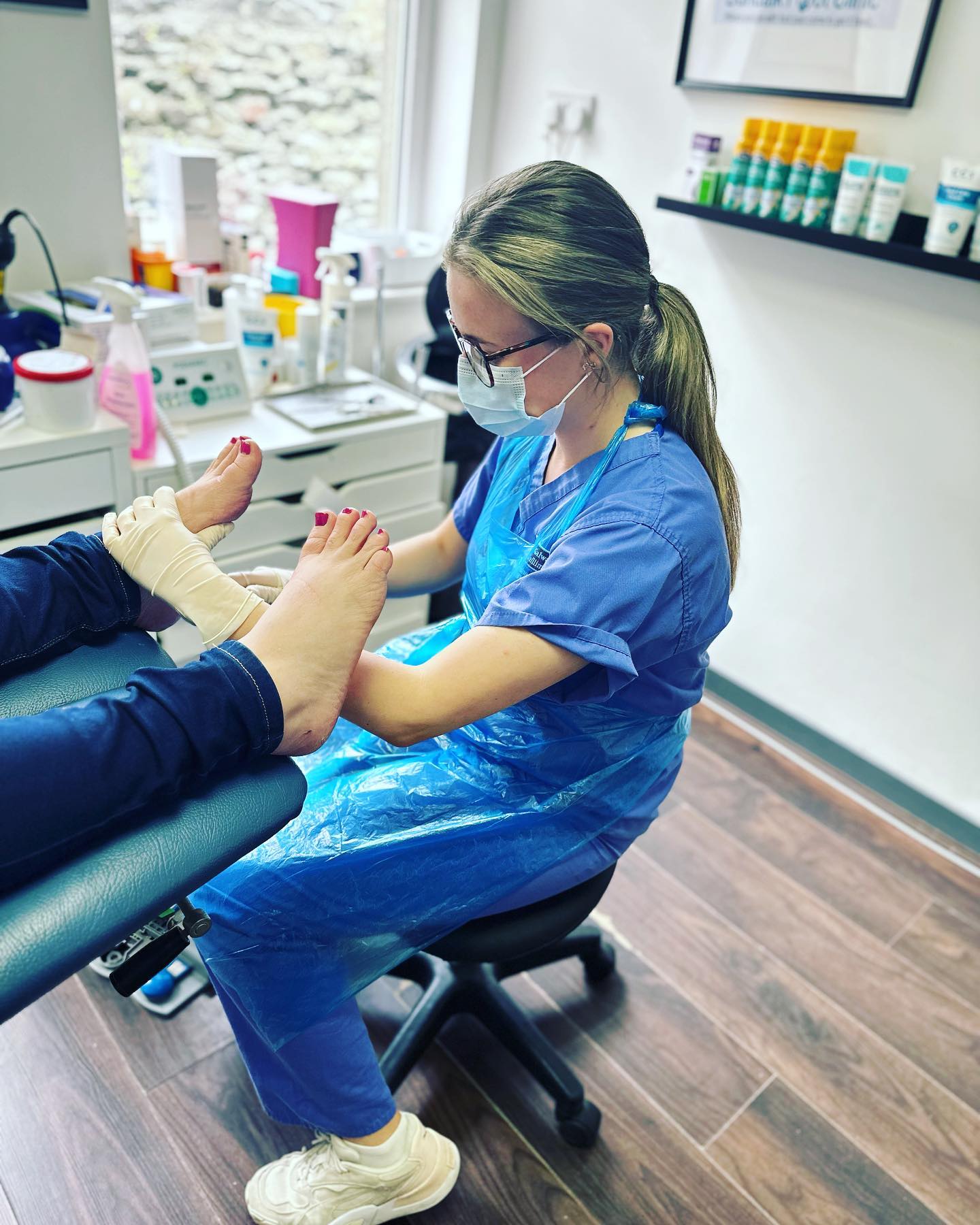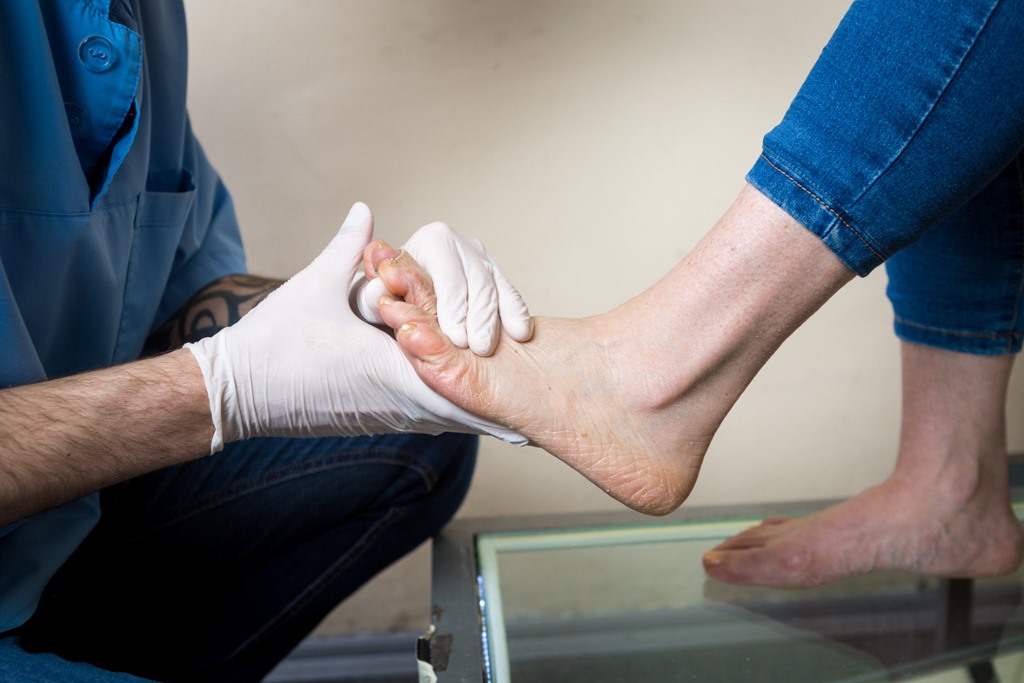Common Foot Bone Injuries: Causes, Treatments, and Overview of Fractures, Stress Fractures, and Dislocations
Foot pain is more common than you think. It’s estimated that 75% of Americans will experience foot health problems at some point in their lives. If you don’t take care of your feet, you risk developing painful and debilitating injuries that can interrupt your daily activities and impact your overall quality of life.
In this blog post, we will explore common foot bone injuries, such as fractures, stress fractures, and dislocations. We’ll discuss the causes, symptoms, treatments, and prevention strategies to help you maintain healthy, happy feet. Whether you’re an athlete, a busy professional, or someone who enjoys a daily walk, this guide is for you.
Let’s take the first step towards understanding foot bone injuries and how you can prevent them.
Understanding Foot Bone Injuries
There are several types of foot bone injuries that can occur, each with its own set of characteristics and implications for treatment. Understanding the differences between these injuries can help in both recognizing and managing them effectively.
Fractures
Fractures occur when there is a break in one of the bones in the foot. These injuries are usually the result of a high-impact trauma such as a fall, a car accident, or a direct blow to the foot. Fractures can vary in severity, from a simple hairline fracture to a complete break where the bone separates into two or more parts.
Stress Fractures
Stress fractures are tiny cracks in the bone that develop over time due to repetitive force or overuse. Unlike acute fractures, which result from a single injury, stress fractures are often seen in athletes or individuals who engage in high-impact activities. Common causes include running long distances or rapidly increasing the intensity of physical activities without adequate conditioning.

Foot Bone Injuries
Dislocations
A dislocation occurs when the bones of the foot are forced out of their normal positions. This type of injury can happen due to a severe twist, fall, or direct impact. Dislocations are often accompanied by ligament damage, making them particularly painful and complex to treat.
Signs, Symptoms, and Diagnosis
The signs and symptoms of foot bone injuries can vary depending on the type and severity of the injury. However, there are some common indicators to look for:
- Pain: Persistent or severe pain in the foot, especially when putting weight on it.
- Swelling: Swelling around the injured area, which may extend to the surrounding tissues.
- Bruising: Visible bruising that may appear soon after the injury.
- Deformity: Obvious deformity or change in the shape of the foot, common in severe fractures and dislocations.
- Limited Mobility: Difficulty moving the foot or toes, and a reduced range of motion.
To diagnose these injuries, a healthcare provider will typically perform a physical examination, checking for tenderness, swelling, and deformities. Imaging tests such as X-rays, MRI, or CT scans are often used to get a detailed view of the bone and identify the exact nature and extent of the injury. Early and accurate diagnosis is crucial for effective treatment and recovery.
Causes of Foot Bone Injuries
Foot bone injuries can result from a variety of causes, each influencing the type and severity of the injury. Understanding these causes can help in both preventing injuries and seeking appropriate treatment promptly. Here are some common causes of foot bone injuries:
- High-Impact Trauma: Situations such as car accidents, falls, or direct blows to the foot often result in acute fractures and dislocations. The sudden and forceful impact can break or displace bones instantly.
- Repetitive Stress and Overuse: Engaging in high-impact activities like running, jumping, or dancing without adequate rest and conditioning can lead to stress fractures over time. The repetitive force exerted on the foot bones gradually causes tiny cracks to form.
- Twisting Injuries: A severe twist of the foot or ankle, often occurring during sports or physical activities, can result in dislocations or fractures. Such injuries usually happen when the foot is planted while the body continues to move in the opposite direction.
- Osteoporosis and Bone Weakness: Conditions that weaken the bones, such as osteoporosis, increase the susceptibility to fractures even with minimal trauma or stress. Individuals with lower bone density are at a higher risk for fractures.
- Improper Footwear: Wearing ill-fitting or unsupportive shoes places undue stress on the foot’s bones and muscles, potentially leading to fractures or other injuries over time. High heels, stiff shoes, or shoes with inadequate cushioning are common culprits.
Addressing these causes through preventive measures, such as wearing proper footwear, gradually increasing activity levels, and maintaining overall bone health, can significantly reduce the risk of foot bone injuries.
Treatments and Recovery
Initial Care for Foot Bone Injuries
The first step in treating any foot bone injury is to provide initial care to manage pain and prevent further damage. This typically involves:
- Rest: Avoid putting weight on the injured foot to allow the bones and tissues to begin healing.
- Ice: Applying ice to the injured area can help reduce swelling and numb the pain. It is usually recommended to ice the injury for 20 minutes every hour.
- Compression: Wrapping the foot with a bandage can help control swelling and provide stability.
- Elevation: Keeping the injured foot raised above the level of the heart can also reduce swelling.

Foot Bone Injuries
Medical Treatments
Depending on the type and severity of the injury, various medical treatments may be required:
- Immobilization: For many fractures and stress fractures, the foot will need to be immobilized using a cast, brace, or walking boot to ensure the bones heal correctly.
- Medication: Pain relievers and anti-inflammatory medications can help manage pain and reduce inflammation. In severe cases, stronger prescription medication may be necessary.
- Reduction: If a bone is dislocated, a healthcare provider may need to perform a reduction, which involves manipulating the bones back into their correct position.
- Surgery: In cases where the bone is severely broken or dislocated, surgery may be required to realign and stabilize the bones. This could involve the use of screws, plates, and pins to hold the bones in place as they heal.
- Physical Therapy: Once the initial healing phase is complete, physical therapy is often recommended to restore strength, flexibility, and mobility to the foot.
Recovery and Rehabilitation
The recovery process can vary widely depending on the injury, but there are general steps to consider:
- Follow-Up Care: Regular check-ups with your healthcare provider are crucial to monitor the healing process and make any necessary adjustments to your treatment plan.
- Gradual Return to Activity: It’s important to reintroduce activity slowly and carefully. Start with low-impact exercises and gradually progress to more demanding activities as the foot strengthens.
- Footwear Considerations: Ensuring proper footwear during the recovery phase is vital. Supportive and well-cushioned shoes can help prevent further injury and provide the necessary support.
- Monitoring for Complications: Be aware of any signs of complications, such as increased pain, swelling, or redness, and seek medical attention promptly if these occur.
With the right treatment and care, most foot bone injuries can heal effectively, allowing you to return to your regular activities. Patience and adherence to medical advice are key components of a successful recovery. Remember, taking the time to heal properly can prevent future injuries and ensure long-term foot health.
Prevention Strategies for Foot Bone Injuries
Preventing foot bone injuries is crucial for maintaining mobility and overall well-being. By adopting certain strategies and lifestyle changes, individuals can significantly reduce their risk of sustaining such injuries. Here are some effective prevention strategies:
- Wear Appropriate Footwear: Invest in shoes that provide proper support, cushioning, and fit. Avoid wearing high heels or shoes with inadequate support for extended periods. Opt for footwear that is suitable for your activity level and terrain.
- Gradual Increase in Activity: When starting a new exercise regimen, increase the intensity and duration gradually. Sudden increases in physical activity can put excessive stress on the foot bones, leading to stress fractures.
- Strength and Flexibility Training: Engage in exercises that strengthen the muscles around the foot and ankle. Stronger muscles can better support the bones and reduce the likelihood of injuries. Additionally, stretching exercises can improve flexibility and prevent strains.
- Maintain a Healthy Diet: Ensure your diet is rich in calcium and vitamin D to promote bone health. Foods like dairy products, leafy greens, and fortified cereals can help maintain bone density and strength.
- Stay Hydrated: Proper hydration helps maintain the elasticity of tissues and prevents cramps or strains that could lead to injuries.
- Use Proper Technique: Whether in sports or daily activities, using correct movement techniques can prevent undue stress on the foot bones. Seek guidance from professionals when learning new physical activities.
- Regular Check-Ups: If you have conditions that could affect bone health, such as osteoporosis, regular medical check-ups are essential. Early detection and management of these conditions can prevent fractures.
- Avoid Overtraining: Allow your body ample time to rest and recover between intense workouts or activities. Overtraining without sufficient rest increases the risk of injuries.
- Environmental Awareness: Be mindful of your surroundings to avoid slips, trips, and falls. Wear suitable footwear and take precautions on uneven or slippery surfaces.
By incorporating these preventive measures into daily routines, individuals can safeguard their foot health and reduce the risk of bone injuries. A proactive approach to foot care not only enhances performance in physical activities but also contributes to long-term wellness. Overall, prioritizing foot health is crucial for maintaining overall well-being.

Foot Bone Injuries
Common Mistakes That Can Lead to Foot Bone Injuries and How to Avoid Them
Understanding common mistakes that lead to foot bone injuries is essential to preventing them. Here are some frequent errors and tips on how to avoid them:
- Wearing Inadequate Footwear: One of the most common mistakes is using shoes that don’t provide proper support or cushioning. This can place undue stress on the foot bones. How to Avoid: Invest in high-quality, supportive footwear that is appropriate for your activity. Ensure that shoes fit well and replace them when they show signs of wear and tear.
- Ignoring Pain and Continuing Activity: Many individuals make the mistake of “pushing through the pain” which can exacerbate an injury. How to Avoid: Listen to your body. If you experience persistent pain, take a break and seek medical advice if necessary. Early intervention can prevent minor issues from becoming serious injuries.
- Overtraining and Lack of Rest: Engaging in repetitive activities without adequate rest can lead to stress fractures and other injuries. How to Avoid: Incorporate rest days into your training schedule and vary your activities to give different muscle groups and bones time to recover.
- Inadequate Warm-Up and Cool-Down: Skipping warm-up exercises or cool-down stretches can increase the risk of foot injuries. How to Avoid: Always include a warm-up session to prepare your muscles and joints for activity, and cool down with stretching exercises to maintain flexibility and reduce muscle soreness.
- Poor Technique in Physical Activities: Using incorrect form during exercise or sports can place excessive pressure on the foot bones. How to Avoid: Seek professional guidance to learn the correct techniques for your activities. Regularly review and adjust your form to maintain proper alignment and reduce injury risk.
- Neglecting Overall Health: Poor nutrition, dehydration, and underlying health conditions can weaken bones and make them more susceptible to injury. How to Avoid: Maintain a balanced diet rich in essential nutrients, stay hydrated, and manage any chronic health conditions with regular medical consultations.
By recognizing and addressing these common mistakes, individuals can better protect their foot health. Proactive measures and mindful practices can ensure that feet remain strong, resilient, and injury-free.
Conclusion
Foot bone injuries can have a significant impact on one’s mobility and overall well-being. Fortunately, by implementing the preventive strategies discussed above and avoiding common mistakes that lead to such injuries, individuals can reduce their risk and protect their foot health. Remember to prioritize proper footwear, gradual increases in activity, strength training, healthy habits, rest and recovery, and environmental awareness. By taking care of your feet, you are investing in your long-term physical health. So make sure to incorporate these practices into your daily routine for optimal foot health. Stay safe and keep moving!
Flagstaff Foot Doctors: Anthony Rosales DPM
https://www.google.com/maps?cid=8835841318590452161
421 N Humphreys St, Flagstaff, AZ 86001, United States
(928) 774-4825
https://flagstafffootandankle.com/
